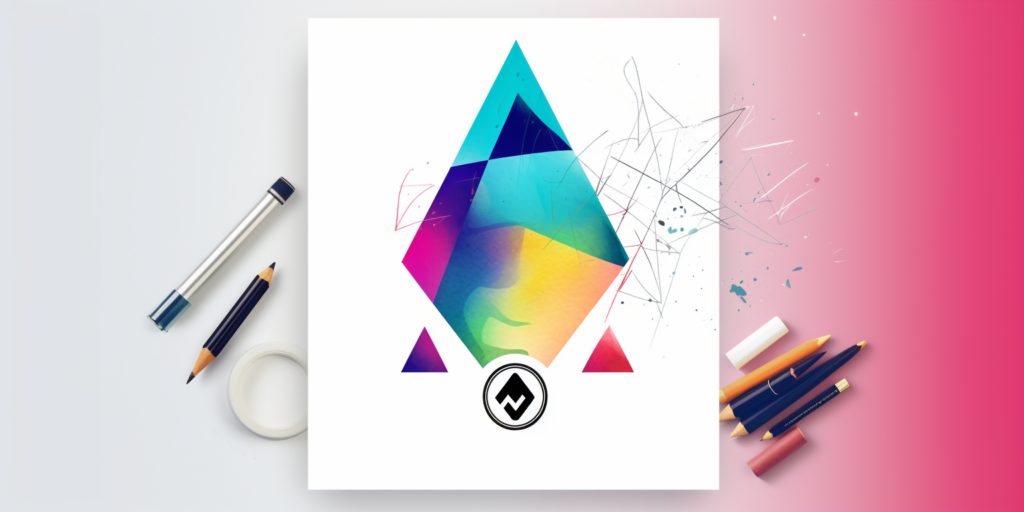
In the ever-evolving landscape of business, where first impressions are paramount, the significance of a compelling brand identity cannot be overstated. At the forefront of this identity is the logo, a visual cornerstone that encapsulates the essence of a brand. Crafting a logo that authentically embodies your brand requires a thoughtful and strategic approach. In this article, we will navigate the intricacies of creating a logo that goes beyond mere aesthetics, delving into the core elements that make it a powerful vessel for communicating your brand’s values and personality. From understanding the nuances of brand identity to the intricate steps of the design process, we will explore how to transform a simple graphic into a symbol that resonates with your target audience. Join us on a journey of visual storytelling, where every line, color, and shape contributes to the narrative of your brand.
Understanding Brand Identity
To embark on the journey of logo creation, a profound comprehension of your brand’s identity is the cornerstone. Your brand identity is more than just a logo; it encapsulates the values, mission, and unique personality that set your business apart. Consider the emotions and perceptions you want your audience to associate with your brand. Are you aiming for trustworthiness, innovation, or a sense of nostalgia? Aligning your logo with these core aspects ensures that it becomes a visual extension of your brand’s ethos, fostering a deeper connection with your target audience. As we delve into the intricacies of logo design, let’s keep in mind that a successful logo is not merely aesthetically pleasing; it’s a powerful communicator of your brand’s essence.
Logo design maker Turbologo supports logo creation for a variety of industries, from tech startups to restaurants.

Design Process
1. Research and Inspiration
The initial phase of the design process involves immersing yourself in the world of your industry and understanding the visual landscape. Investigate competitors’ logos, noting design elements that resonate with their audience. Simultaneously, explore design trends to ensure your logo remains contemporary. This research phase is essential for gathering inspiration and identifying the unique visual language that will speak to your brand identity.
2. Conceptualization
Armed with insights from your research, it’s time to translate ideas into tangible concepts. Sketching out rough designs allows for creative exploration, enabling you to experiment with various shapes, symbols, and typography. The key here is to focus on simplicity and versatility; an effective logo should be memorable and adaptable across different mediums and contexts.
3. Color Palette and Typography
Colors carry emotional weight and are integral to conveying your brand’s personality. Select a color palette that not only aligns with your brand identity but also elicits the desired emotional response from your audience. Similarly, choose typography that complements the overall design, reflecting the tone and character of your brand. These elements collectively contribute to the visual harmony of your logo.
4. Incorporating Brand Elements
To elevate your logo beyond a mere graphic, infuse it with brand-specific elements that tell a story. Symbols, icons, or even a carefully chosen mascot can serve as visual cues that resonate with your target audience. Ensure that these elements align seamlessly with your brand’s values and messaging, contributing to a cohesive and memorable brand identity.
The design process is a dynamic journey that requires creativity, adaptability, and a keen understanding of your brand. Iterative exploration, coupled with a willingness to experiment and refine, is crucial in shaping a logo that not only captures attention but also communicates your brand’s story effectively. As we move forward, we’ll explore the importance of feedback and revision, acknowledging the collaborative nature of crafting a logo that stands the test of time.
Feedback and Revision
The design process is inherently collaborative, and seeking feedback is a pivotal step towards refining and perfecting your logo. Once you have a preliminary design, gather input from various stakeholders, including employees, clients, and target audience members. Constructive criticism can provide valuable insights that may have been overlooked during the creative process.
Remember, the goal is not just to create a logo that appeals to personal preferences but one that resonates universally with your intended audience. Assess the feedback received, paying attention to recurring themes or suggestions. This iterative approach allows your logo to evolve, ensuring it effectively communicates your brand’s identity and engages your audience.
In the revision phase, be open to making adjustments without compromising your brand’s core values. This flexibility is crucial for addressing concerns or refining elements that might enhance the overall impact of the logo. Consider how the logo appears across various platforms and mediums, ensuring its adaptability and consistency.
By embracing feedback and being willing to iterate, you not only refine the visual aspects of your logo but also strengthen its alignment with your brand identity. This collaborative approach contributes to a logo that is not only visually appealing but also resonates authentically with your audience, fostering a lasting connection.
As we conclude our exploration of the feedback and revision phase, we transition to the final section of our journey — the significance of a well-crafted logo in building brand recognition and leaving a lasting impression on your audience.
In the realm of business, a logo is more than just a graphic; it’s a visual ambassador that encapsulates the soul of a brand. Through the meticulous journey of understanding brand identity, navigating the design process, and incorporating valuable feedback, a well-crafted logo emerges as a powerful symbol that goes beyond aesthetics.
As the final strokes are added and the last adjustments made, the significance of a thoughtfully designed logo becomes apparent. It serves as the face of your brand, leaving a lasting impression on your audience and distinguishing your business in a crowded market. A successful logo is not static; it evolves with the brand, adapting to changing times while maintaining its core identity.
Moreover, a logo becomes a beacon of recognition, instantly connecting with consumers and forging a sense of familiarity. Consistency across various touchpoints — be it digital platforms, print materials, or physical spaces — reinforces your brand identity, creating a cohesive and memorable experience for your audience. In conclusion, the process of creating a logo that embodies your brand’s identity is a multifaceted journey, requiring creativity, strategic thinking, and a deep understanding of your brand’s essence. As you unveil your logo to the world, it becomes a visual storyteller, narrating the values and aspirations of your brand. May your logo stand as a testament to your brand’s unique narrative, resonating with your audience and leaving an indelible mark on the ever-evolving canvas of business.
